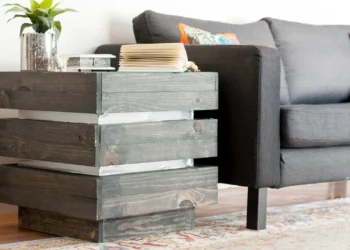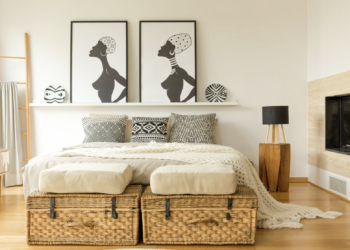The interior of a rental is one of its vital elements. This part attracts a lot of potential occupants and motivates them to consider the rental. However, a rental’s interior is incomplete without a durable furniture. It’s a significant difference between furnished and unfurnished apartments. Therefore, the way you acquire your furniture and the quality of the furniture you buy could significantly affect your profitability if you are a landlord renting out furnished residences.
Finding a furniture provider you can rely on to deliver excellent, durable furniture is crucial. This is because furniture can get damaged regardless of the sort of tenants you rent to, be they students, professionals, or families. Furniture can get expensive, too.
That’s why you need to consider a few things, such as the value of investing in furniture that will last more than a few years. Read on as we help you clarify the myths surrounding furnishing your rental property and ultimately show you how to pick the appropriate furnishings.
Create a Furniture Checklist
It’s incredibly daunting to furnish a room from scratch, mainly if it’s a rental where other individuals will reside. The process of furnishing can be thrilling but also very difficult, requiring decisions on everything from aesthetics to furniture selection to layout. When faced with an empty room, a lengthy to-do list, and a wide selection of furnishings, deciding which piece of furniture to purchase is challenging. You need not worry, though. That’s where a furniture checklist comes in.
You can streamline this procedure by using a furniture checklist. Creating this list helps you determine the furnishings for each room in the rental property. This way, you can decide what improvements to make to your living room, dining room, kitchen, guest room, and home office. A checklist also aids in matching the furniture you choose to the preferences and requirements of a prospective tenant. Because of this, you can save time, money, and other valuable resources.

Know Who Your Target Tenant Is
It’s crucial to consider your target renters’ demographics when selecting furniture for your rental property. For instance, if you’re renting space to recent graduates, choose items with a more trendy or contemporary vibe. If potential renters are families, cozy and long-lasting pieces are handy. You can hire a knowledgeable property manager to help you find quality tenants.
Influences on your furniture selection should have roots in the demographics, way of life, and preferences of your intended renters. This can assist you in designing a space that resonates with your target market and enhances the attractiveness of your rental property to prospective tenants.
What Should the Lease Addendum Mention About Furniture?
A lease addendum is a component of the rental lease agreement that provides more specific information regarding a particular niche feature of the rental contract. When both parties sign it, it becomes a legally enforceable contract and is regarded as a lease component. For example, it’s typical to have a lease addendum covering things like caring for pets, setting up satellite dishes, and replacing smoke detector batteries.
The regulations you’ve specified regarding the maintenance and management of the furniture you provide are the main emphasis of a lease addendum for a furnished flat.
Although the terms of furniture maintenance may be a manageable length, your lease agreement covers all the usual topics. A furnished apartment addendum is an excellent option since it can list the provided furniture, describe its condition, and designate the tenant as responsible for any missing or damaged goods.
When the tenant gains occupancy, every item of furniture in the rental property often has a listing in a furniture lease addendum. If required, add a brief description of the illness. Below are some points frequently added to a lease addendum when it comes to furniture:
- Tenants mustn’t take any indoor furniture outside under any circumstances.
- A minimum of 4 inches should separate furniture from the HVAC intake and vent openings.
- The condition of the furniture should be maintained by the tenant, excluding normal wear and tear.
- To determine whether repairs or replacements are required, tenants should notify the landlord immediately of any furniture destruction or broken pieces of furniture.
- For unreported breakage above and beyond typical deterioration, the tenant is liable.
- Tenants must replace any furniture not found at the move-out inspection at the tenant’s expense.
Final Thoughts
For a rental home, choosing sturdy furniture requires thoughtful consideration and preparation. You can select efficient and fashionable items by considering elements like financing, space, material, repair, and the demographic of potential tenants.
Many landlords are also scared by the likelihood of furniture damage. In light of this, you can add a provision to your rental agreement and opt for furniture made of durable materials impervious to stains to ensure good maintenance of your furnishings.









